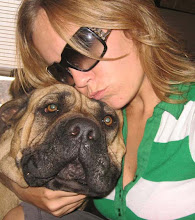Small spaniels have long been a fixture among the British aristocracy, as far back as the 13th century. Sometimes called Spaniel Comforters or Spaniels Gentle, these small dogs served as companions for ladies and children, lap warmers for residents of chilly castles and travelers in drafty coaches, and as a target for fleas that would distract the tiny parasites from feeding on humans and passing the plague. 
Some accounts say that doctors sometimes wrote prescriptions that included more time with the toy spaniel, and these small dogs with their affectionate and attentive temperaments served as confidantes and companions. However, before the 19th century and the advent of dog shows, breeds weren’t distinguished the way they are today. Everyone knew about small spaniels, but dogs varied widely in size and appearance. “A lot of toy breeds claim the same historical role, including the Papillon, the Japanese Chin and especially the English Toy Spaniel,” Gammon says.

Some accounts say that doctors sometimes wrote prescriptions that included more time with the toy spaniel, and these small dogs with their affectionate and attentive temperaments served as confidantes and companions. However, before the 19th century and the advent of dog shows, breeds weren’t distinguished the way they are today. Everyone knew about small spaniels, but dogs varied widely in size and appearance. “A lot of toy breeds claim the same historical role, including the Papillon, the Japanese Chin and especially the English Toy Spaniel,” Gammon says.
Many of these modern breeds share similar roots, but it was King Charles II (1630 to 1685) who lent the Cavalier King Charles Spaniel his name and helped distinguish the breed from other toy spaniels.
 His extreme devotion to these beautiful and tractable companions is the stuff of legends.Charles II’s affinity for the toy spaniel must have begun in childhood, because his father, Charles I (1600 to 1649), was similarly taken with the small spaniels. Charles I’s black-and-white spaniel, Rogue, accompanied him everywhere, even to his execution.
His extreme devotion to these beautiful and tractable companions is the stuff of legends.Charles II’s affinity for the toy spaniel must have begun in childhood, because his father, Charles I (1600 to 1649), was similarly taken with the small spaniels. Charles I’s black-and-white spaniel, Rogue, accompanied him everywhere, even to his execution.As an adult, Charles II, often called the “Merry Monarch,” kept a pack of spaniels in his bedroom, even allowing females to whelp puppies in his personal chamber, a practice many members of the household viewed with disdain. Charles II, who ruled from 1649 to 1660, kept many spaniels and probably took the larger, sturdier dogs on his travels by horse and ship. The smaller, more delicate specimens made perfect gifts for ladies of the court.
Charles II and his brother, James II (1633 to 1701), had a pact to continue breeding the toy spaniels, even in the event of Charles’ death. James was so committed to the preservation of the dogs that one story tells of a shipwreck in which James was heard yelling, “Save the dogs!” and, as if an afterthought, “…and the Duke of Monmouth!” When Charles II died in 1685 at the age of 54, 12 toy spaniels mourned at his bedside.


No comments:
Post a Comment